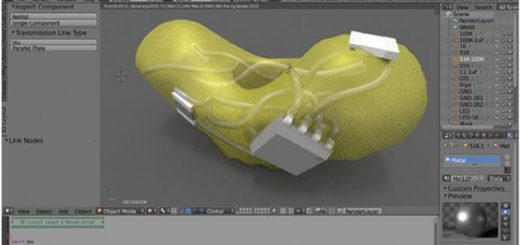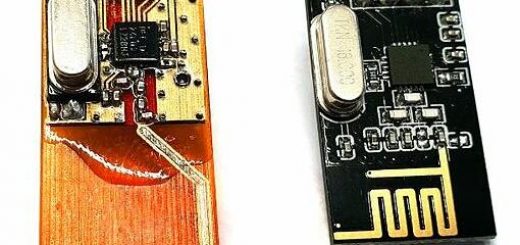A 3D Printing Technology that can Enmesh Electronics into Biological Materials.
Interfacing active devices with biology in 3D printing could impact a variety of fields, from regenerative bioelectronics and smart prosthetics to biomedical devices and human-machine interfaces. Researchers at the University of Minnesota are exploring 3D printing with biology from the molecular scale of DNA and proteins to the macroscopic scale of tissues and organs. The goal is to print three-dimensional biological material that is soft and stretchable as well as temperature sensitive.
“We build 3D printers that go beyond hard plastics. Hard plastics have limited abilities. We’ve been asked to expand capabilities to include cells, soft materials, or electronic materials,” said Michael McAlpine, Benjamin Mayhugh associate professor of mechanical engineering at the University of Minnesota. “We’re working on a whole range of possibilities, from bionic organs to 3D printed boards with tissue engineering.”

At the University of Minnesota, Michael McAlpine’s group is working on a wide range of bio materials in 3D printing. (Image source: University of Minnesota)
![]() Interweaving Biology and Electronics
Interweaving Biology and Electronics
The ability to three-dimensionally interweave biological and functional materials could lead to the creation of devices that possess unique and compelling geometries, properties, and functionalities. Interfacing these active devices with biology in a 3D print environment could impact a variety of fields including regenerative bioelectronics, smart prosthetics, biomedical devices, and human-machine interfaces. “We’re working to enable printers to print different materials on the same platform. For the first time, it would allow anyone to fabricate or architect diverse materials like biological or electronics that are interwoven into arbitrary shapes,” said McAlpine. “This includes advanced biomedical objects that are custom-fitted or designed for function. The 3D printer is the tool that enables the next revolution in biomedical objects.”
Biology—from the molecular scale of DNA and proteins to the macroscopic scale of tissues and organs—is three-dimensional, often soft and stretchable, and temperature sensitive. This renders most biological platforms incompatible with the fabrication and materials processing methods that have been developed for functional electronics, which are typically planar, rigid, and brittle. McAlpine is working to overcome these limitations by experimenting with new materials. “Since there are so many types of materials, you have a whole host of problems from energy harvesting to biomedical and electronics,” he said.
![]() Personalized 3D Printing Biological Objects
Personalized 3D Printing Biological Objects
The idea is to use an additive manufacturing technology that offers freeform, autonomous fabrication. This approach addresses a number of possibilities: (1) using 3D printing and imaging for personalized, multifunctional device architectures; (2) employing nano-inks as an enabling route for introducing diverse material functionality; and (3) 3D printing a range of functional inks to enable the interweaving of a diverse palette of materials, from biological to electronic.
3D printing offers a multiscale platform that can incorporate functional nanoscale inks. This includes the printing of microscale features and, ultimately, the creation of macroscale devices. This blending of 3D printing, functional materials, and “living” platforms may enable next-generation 3D printed devices from a one-pot printer. “We’ve shown a lot in piecemeal demonstrations,” said McAlpine. “We’re integrating multi functionalities in complicated ways for advanced therapeutics and advanced prosthetics. This is an exciting future that’s getting more and more complicated.”
Source: Design News




Recent Comments